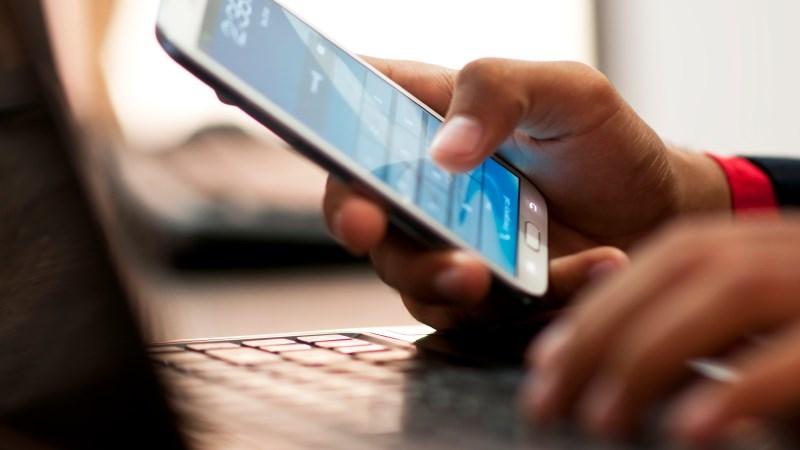Social media hacks — whether they’re being used to steal money or mete out vigilante justice — are a concerning reality that Internet users face on a daily basis.

And while you may feel like a social media hack will never happen to you, the risk is actually higher than you might think. According to a recent survey by HighSpeedInternet.com, an average of 1 in 4 people has been hacked, making cyber security as an important topic for everyone to understand.
Unfortunately, most web users neglect to take even the simplest precautions to prevent an online breach.
For many people, social media accounts are closely tied to a lot of personal data — contact information, credit card numbers, and even physical addresses.00To help you protect that information and avoid becoming a victim, here are some advices for maintaining social media security.
1. Change Your Passwords Regularly
Though using the same password across multiple accounts for several years is a good way to remember your login information, it’s also a threat to your cyber security. Change your password regularly to reduce the likelihood of a hack, and make sure that each new password is sufficiently complex. The longer it is, the better — but at a minimum, it should be composed of eight characters, including at least one symbol, number, and capital letter.
2. Put a Monitoring App in Place
If you access social media accounts on your phone, consider using a monitoring app. Social Media Vault, for example, is a great way to manage your social media accounts safely, and it supports all major social networks. In addition to solid password protection, SMV has “Hack Attempt Monitoring”, which flags users who try to access your accounts without permission while you’re away. This app also doubles as a password manager, which is useful for storing strong passwords without having to type them in every time you log in to a different account.
LogDog is another app available to use with some of the bigger social media networks, including Facebook and Twitter. It works as a 24-hour watchdog that actively scans attached accounts for suspicious activity, and you’ll receive an alert when someone attempts to gain unauthorized access. The company also has a blog where it regularly posts articles about online security.
3. Install Antivirus and Security Software
Whether you use a Mac® or a PC, installing effective antivirus software is essential. Certain types of malware give third parties access to social media account information, so it’s imperative that you do everything you can to prevent those bugs from getting in.
Though Mac users often have an easier time avoiding viruses — they make up a smaller percentage of users overall, so hackers generally prefer to target PCs — there are still anti-virus programs available for Apple® computers that are worth checking out. AVG Antivirus, for example, is available for all operating systems. Once you’ve got an antivirus program installed, make sure you regularly update the software for security against new and evolving threats.
4. Keep Business and Personal Social Media Accounts Separated
Corporate social media accounts require particularly sensitive handling. As such, it’s a good idea to keep all business accounts separate from your personal ones. Similarly, it’s recommended that you don’t sign up for company social media accounts using personal or work email addresses, as that may make your account vulnerable to outsiders who can access it through your contact page or ads.
Ideally, corporate social media accounts should be monitored by your IT team, though social media management systems like Hootsuite and Sprout Social can also allow you to supervise your social accounts without widely disseminating sensitive login information.
5. Control Your Privacy Settings
Have you ever posted something to Facebook that you thought only your friends could see, only to later discover that it was made public to anyone? Staying aware of who’s viewing your online content is vital to your cyber security. Even among friends, it’s a good idea to avoid giving out personal details that could put your security at risk — you can’t be totally sure of who has access to your posts.
Most popular social networking sites allow you to adjust account-wide privacy settings, and some may even let you customize the privacy of individual posts. Set strong privacy limits on each social site, and don’t add people as a friend if you don’t know who they are. Don’t forget to regularly check on those settings, too, and change them as necessary.
6. Be Wary of Public Wi-Fi
Sharing a network with numerous people you don’t know isn’t ideal, but sometimes you need to submit a proposal before an imminent deadline and there’s no other choice. Stay safe by turning off network discovery and file sharing, deactivating Wi-Fi when you aren’t actively using a connection, and enabling your firewall. You should also limit or avoid sensitive browsing — including entering passwords to your social accounts.
7. Don’t Engage with Suspicious Content
Most people are aware that they should avoid opening suspicious emails from unfamiliar senders, but few realize that this rule translates over to social media messages, too. It’s also important to refrain from clicking any links you don’t know the source of, as hackers are just as willing to pull a phishing scheme on social media as they are via email.
When it comes to your cyber security, it’s always better to be safe than sorry. Implementing tried-and-true safety techniques will help keep you in charge of your online activity.













